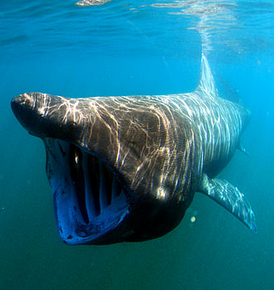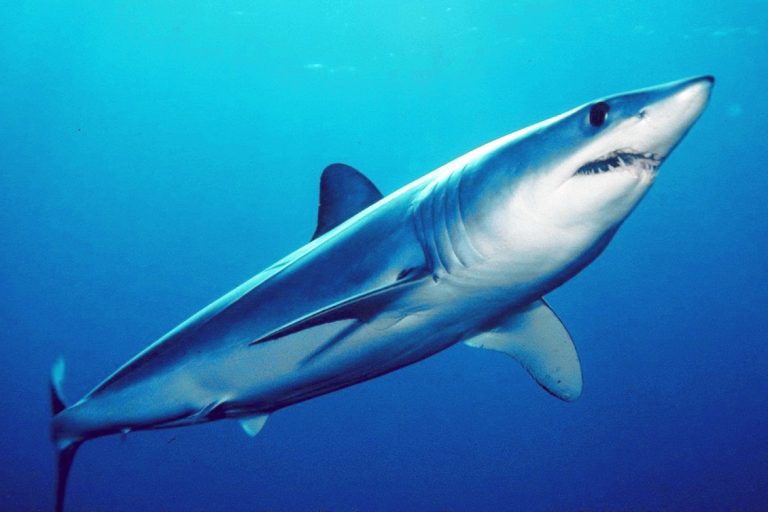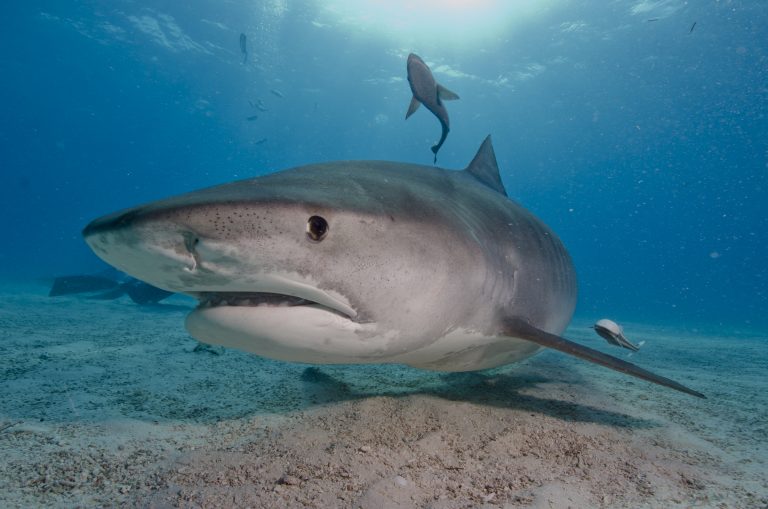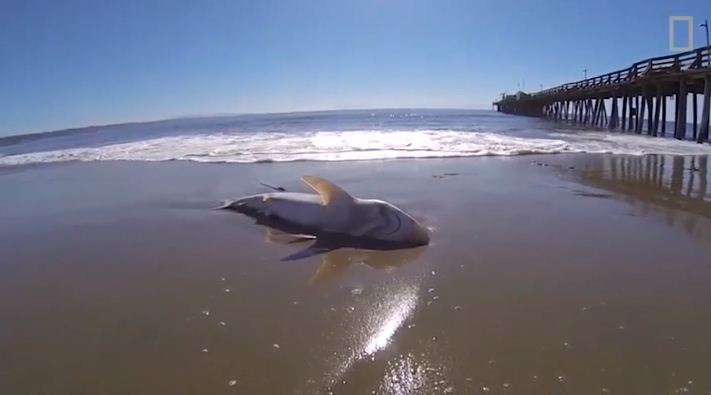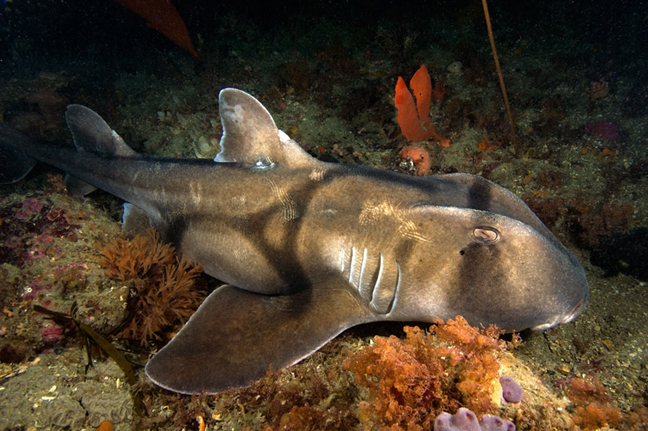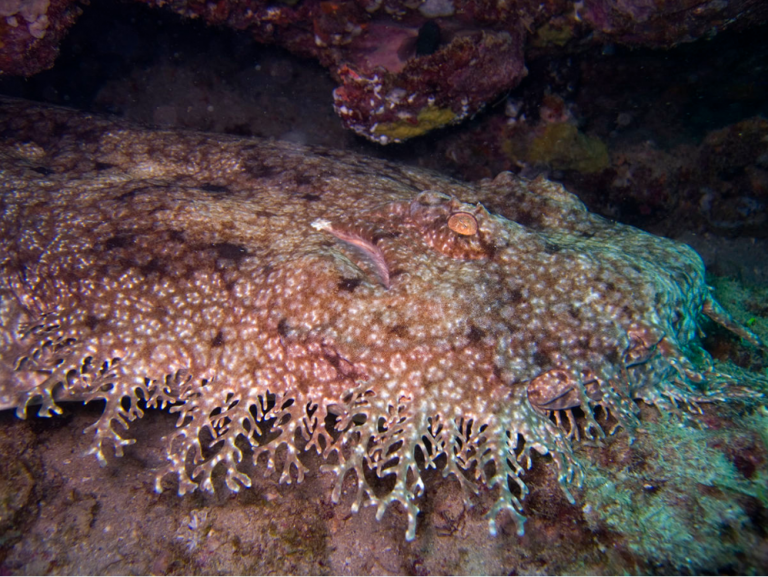Species Profile: The Swell Shark
The Swell Shark is a biofluorescent species that has developed an interesting strategy for escaping predators.
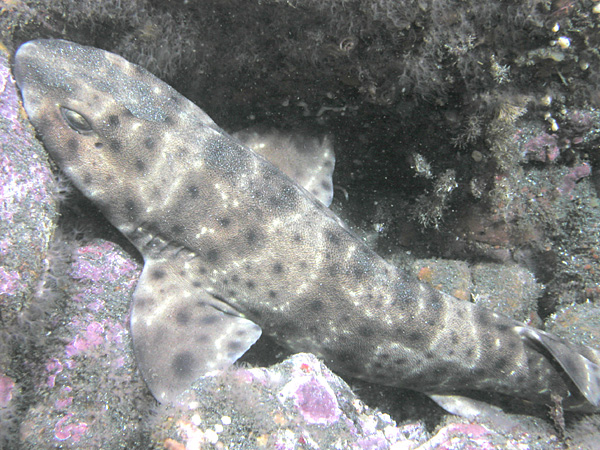
The Swell Shark is a species of catshark belonging to the family Scyliorhinidae. We talked about this shark a short while ago in our viral shark video roundup for 2017.
This shark’s appearance is close to that of the leopard shark because of its spotted body. Researchers discovered that this animal is biofluorescent in 2014. Meaning it re-emits a green glow when illuminated by blue or ultraviolet light and moonlight too.
Swellsharks have two dorsal fins; a rounded one in the pelvic area and another one in the anal area. Their bodies are yellow/brown with dark blotches and white spots. They have very small and tight gills and large gold-colored eyes with nictitating membrane.
Its common name comes from the fact that it puffs itself to about double its regular size to save itself from capture by predators. They do this by swallowing large quantities of water. When threatened, these sharks will bend their bodies into a U-shape and grab their tail fins with their mouths.
As a result of this shape, predators will find it difficult to bite them or pull them out of their hiding place. Similarly, when brought to the surface, this shark can also puff itself by gulping air. As soon as the threat is over, the swell shark releases a dog-like bark when expelling the air.
This species is nocturnal and spends its day sleeping in reef crevices and caves. Also, they are a common exhibit in aquariums as they survive for years in captivity.
The IUCN classifies the Swell Shark as a Least Concern species.
1) Scientific Name
Cephaloscyllium Ventriosum
2) Scientific Classification:
- Kingdom: Animalia
- Phylum: Chordata
- Class: Chondrichthyes
- Order: Carcharhiniformes
- Family: Scyliorhinidae
- Genus: Cephaloscyllium
- Species: Cephaloscyllium Ventriosum
3) Life Expectancy
Their life expectancy ranges from 20 to 35 years. This range of years holds for most species of sharks.
4) Average/Maximum Length
The largest swell sharks can grow up to 110 cm (43 inches). However, most are around 90 cm (35 inches) long.
They usually puff up their size during attacks by larger sharks and seals to prevent such predators from dragging them out of their hiding places like ledges, rocky reefs and crevices.
5) Maximum Swimming Speed
Swell sharks are sluggish swimmers and prefer to lie in ambush with their mouths open to catch prey.
Below is a video of the Swell Shark uploaded on Youtube by National Geographic.
6) Interaction With/Danger to Humans
This shark isn’t known to attack humans and it will remain motionless if a diver approaches it.
Interaction with humans in the wild is minimal and they are only caught by long-lines and bottom trawls.
Their products aren’t exactly known for high economic values which makes them a rare target for fisheries. However, they are a common display animal in aquariums because of their unique color and adaptation to captivity.
Swell sharks are common in aquariums and typically completely harmless to humans.
7) Reproduction Details
Swell sharks have an oviparous mode of reproduction. This means they lay eggs that develop and hatch outside the body.
The eggs can be either green in color or amber, with a flattened shape and are attached to reefs through tendrils.
Research states that the tendrils differ in length which is a factor determined by the amount of surf action under which the eggs are laid. The developing embryos feed on yolk alone until they are hatched. Their eggs hatch between 7.5 to 12 months but this time is affected by factors like water temperature.
8) Diet/Hunting Pattern Of The Swell Shark
This is a nocturnal predator and it feeds mainly on small reef fishes and other small prey items. Other common prey include invertebrates like benthic mollusks and crustaceans.
A swell shark is not an aggressive hunter and it prefers to lie in ambush and suck in small fishes that swim close to its wide open mouth. They often enter lobster traps set by fishermen with the hope of an easy meal.
The Swell Shark is very sociable with other sharks and can be commonly seen sleeping next to or on top of others of its species.
9) Alternative Names
- Dogfish
- Neon Green Swellshark
- Balloon Shark
- Puffer Shark
10) Population and Conservation Status
Fortunately for this shark, humans regard its meat and other products as poor quality and of little commercial value. Therefore fishermen don’t actively hunt it.
But it’s often caught as bycatch especially because of its habit of entering lobster traps. Although most fishermen release it when caught, it’s often already dead when they find it.
This accidental catching coupled with low birth rate could affect its status in the future.
In the meantime, the IUCN rates the Swell Shark as a Least Concern species worldwide.
Incidental catches of Swell Sharks could eventually affect their conservation status negatively.
11) Ancestry And History
Its scientific name Cephaloscyllium comes from the Greek “kephale” which means head, and Ventriosum meaning large belly. That’s in reference to its ability to swallow large amounts of water and double in size when threatened.
12) Distribution And Habitat
These sharks swim in the Eastern Pacific, the waters of central California coast, the Gulf of California, and the southernmost tip of Mexico.
Their preferred habitat is over continental shelves and subtropical waters at depths of up to 457 meters (1,499 feet).

